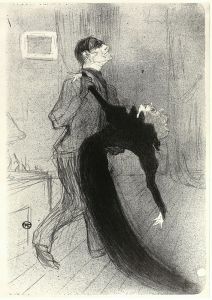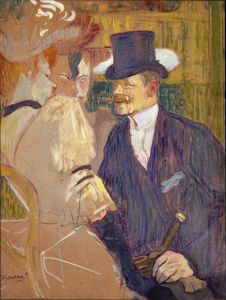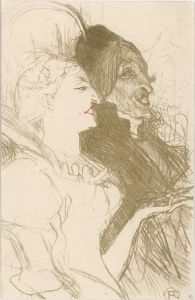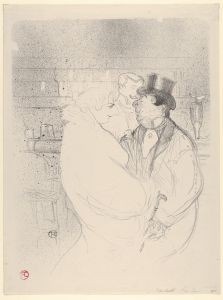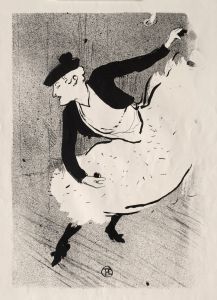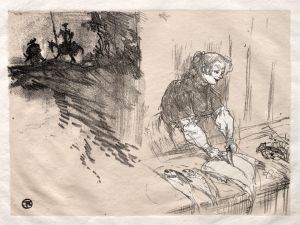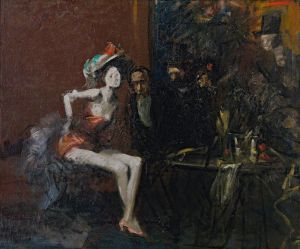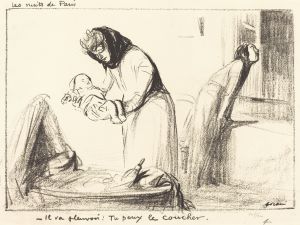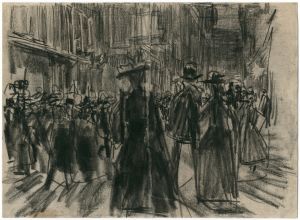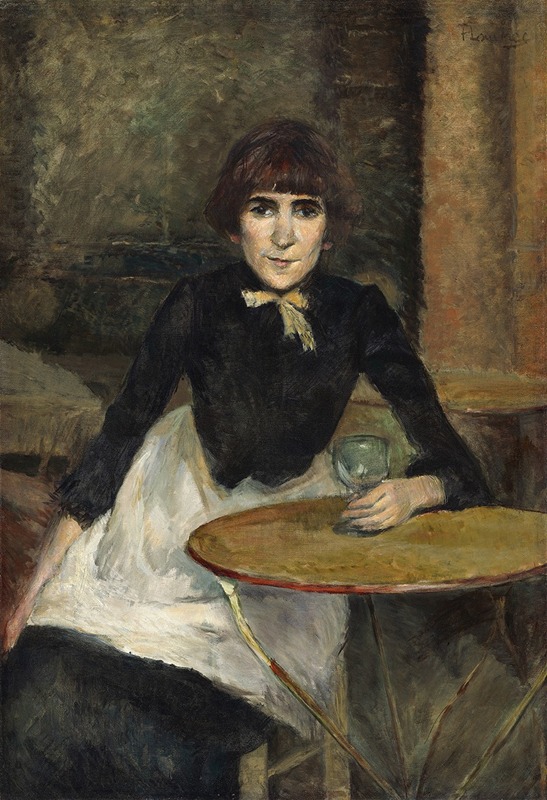
A la Bastille
A hand-painted replica of Henri de Toulouse-Lautrec’s masterpiece A la Bastille, meticulously crafted by professional artists to capture the true essence of the original. Each piece is created with museum-quality canvas and rare mineral pigments, carefully painted by experienced artists with delicate brushstrokes and rich, layered colors to perfectly recreate the texture of the original artwork. Unlike machine-printed reproductions, this hand-painted version brings the painting to life, infused with the artist’s emotions and skill in every stroke. Whether for personal collection or home decoration, it instantly elevates the artistic atmosphere of any space.
Henri de Toulouse-Lautrec, a prominent French painter, printmaker, and illustrator, is renowned for his depictions of the vibrant and often decadent life in Paris during the late 19th century. His works capture the essence of the bohemian lifestyle of Montmartre, a district known for its nightlife and artistic community. Among his many works, "A la Bastille" is one that reflects his keen observation and unique artistic style.
"A la Bastille" is a painting that exemplifies Toulouse-Lautrec's ability to portray the lively and sometimes chaotic atmosphere of Parisian life. While specific details about this particular painting are scarce, it is consistent with his broader body of work, which often includes scenes from cabarets, dance halls, and other social venues. Toulouse-Lautrec's art is characterized by its bold use of color, dynamic composition, and an almost caricature-like portrayal of figures, which together convey a sense of movement and immediacy.
Toulouse-Lautrec was born into an aristocratic family in 1864 in Albi, France. Despite his noble lineage, he chose to immerse himself in the bohemian lifestyle of Paris, where he found inspiration among the city's performers, artists, and everyday people. His work is often associated with the Post-Impressionist movement, and he is credited with influencing both the development of modern art and the rise of the poster as a legitimate art form.
The artist's unique perspective was partly shaped by his personal experiences. Toulouse-Lautrec suffered from a genetic disorder that affected his bone growth, resulting in a short stature and physical disabilities. These challenges, however, did not hinder his artistic pursuits; instead, they may have contributed to his empathetic portrayal of the marginalized individuals he often depicted in his art.
Toulouse-Lautrec's technique involved the use of bold outlines and flat areas of color, a style that was influenced by Japanese woodblock prints, which were popular in Europe at the time. His ability to capture the essence of his subjects with minimal detail is one of the hallmarks of his work. In "A la Bastille," as in many of his other paintings, Toulouse-Lautrec's keen eye for detail and his ability to convey the spirit of the scene are evident.
While "A la Bastille" itself may not be as widely recognized as some of his other works, such as "At the Moulin Rouge" or his famous posters for the cabaret performer Aristide Bruant, it remains an important part of his oeuvre. Toulouse-Lautrec's art continues to be celebrated for its innovative approach and its vivid portrayal of a bygone era.
Henri de Toulouse-Lautrec passed away in 1901 at the age of 36, leaving behind a legacy that has had a lasting impact on the art world. His works are housed in major museums and collections around the world, where they continue to be studied and admired for their artistic merit and historical significance.





